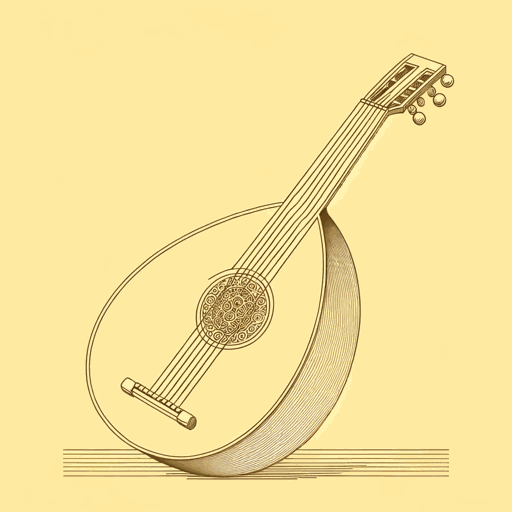41 pages • 1 hour read
Baldassarre CastiglioneThe Book of the Courtier
Nonfiction | Book | Adult | Published in 1528A modern alternative to SparkNotes and CliffsNotes, SuperSummary offers high-quality Study Guides with detailed chapter summaries and analysis of major themes, characters, and more.
Summary and Study Guide
Overview
Baldassare Castiglione, an Italian courtier, diplomat, soldier, and prominent Renaissance author, wrote The Book of the Courtier between 1513 and 1527. Principally an instructive work, the book takes place over the course of four evenings in the Italian court of Urbino in 1507. To entertain themselves, the courtiers discuss the nature and traits of the ideal courtier, dealing with topics of individual morals, behavior, and etiquette, particularly in situations involving royalty.
The book begins with a letter of dedication to Don Michel de Silva, the Bishop of Viseu. Castiglione praises the courtiers of Urbino and explains that he is hurrying the release of The Book of the Courtier due to the many unauthorized versions already being circulated. The letter details Castiglione’s intention to commemorate the cultural refinement of the Urbino court, a place he spent the most significant years of his life.
Split into four books, each section recounts an evening’s fictional conversations. On the first night, Count Ludovico di Canossa leads a discussion on what constitutes the perfect courtier, beginning by discussing physical and moral traits. The Duke of Urbino recommends that the courtier be of noble birth and enumerates a number of sports in which he should be proficient. He advocates for learning in the classics, along with lucidity, and argues that the perfect courtier should have musical and artistic ability.
The second book opens with a critique of nostalgia. The courtiers reprise the previous evening’s discussion, declaring that good judgement is essential for the courtier. The courtiers discuss dress code, explaining that an ideal courtier should wear sober attire, and be astute in his choice of friends, as this affects his reputation. The main speaker for the evening, Federico Fregoso, describes some general rules: The courtier should display his virtues flawlessly and naturally, winning the admiration of his lord without arousing envy in his peers. The ideal courtier should also be acutely aware of his audience at all times, devoting himself entirely to his Prince, leading him towards virtue.
Pietro Bembo, a Venetian scholar and poet, responds to the Prefect’s question about how the courtier can best entertain by identifying three kinds of humor: anecdotes, quips and practical jokes. Courtiers should avoid cruel jokes, while still engaging in wordplay and sarcastic metaphors. Irreligious jokes should be avoided, but dissimulation and disparities can be amusing. It is ungentlemanly to joke at a woman’s expense, and courtiers should be sincere in love. Practical jokes should be amicable, and Bembo regales the court with his pranks. The courtiers decide that the next night will be devoted to defining the ideal court lady.
The third book begins with more praise for the court of Urbino. Giuliano de’ Medici, the Magnifico, begins to describe the ideal female courtier. She should not resemble a man, but like the male courtier be noble, elegant, and well-mannered. She should be virtuous and a good mother, avoiding gossip, sport, and stridency. The Magnifico contests Signor Gaspare’s assertion that women are defective, as without women the human race would end. Gaspare maintains that men are superior, but the Magnifico contends that women are simply more sensitive. He gives examples of virtuous women such as Alexandra, Epicharis, and Camma. Gaspare argues that these are all in the past, to which the Magnifico responds with a string of modern examples.
Gaspare continues to argue about the imperfection of women, rejecting the Magnifico’s examples. The Magnifico claims that a true lady of the court needs to be cautious in matters of love, deciding who loves her truly by refusing suitors. Married women should not stray, while unmarried women should encourage only virtue in their suitors. Love should be revealed through action not words, and kept secret. Gaspare starts to respond, but the battle of the sexes is paused to allow more time for discussion of the ideal courtier.
The fourth book opens with a lament for the courtiers who have since died, and reflects on the illustrious careers of others present at these discussions. Federico Fregoso’s brother, Ottaviano Fregoso, resumes defining the ideal courtier, saying one should avoid both effeminacy and falsehood and be an exemplar of virtue. Courtiers should develop moral qualities, and remember that true knowledge prevents vice, and temperance prevents formation of enemies.
The discussion continues, examining different forms of government. Signor Gaspare asks whether a prince or a republic is the happier form of government. Ottaviano answers a prince, who is the head to the body politic. Bembo believes a republic offers greater freedom, and Ottaviano admits that a tyranny is the worst form of government. Judicious men are best governed by a monarch however, who is like god, and whose office it is to issue commands.
At the end of the book, Bembo talks about Platonic love. He asserts that the courtier should arouse no displeasure in love, which he defines as the longing to possess beauty. He distinguishes between sensual and spiritual beauty. The courtly lady may grant her lover a kiss, in which the two forms of beauty are brought together. To overcome torment, the lover must contemplate universal beauty. Bembo concludes his diatribe with a prayer. When he is finished, the courtiers conclude their forum and part ways.

